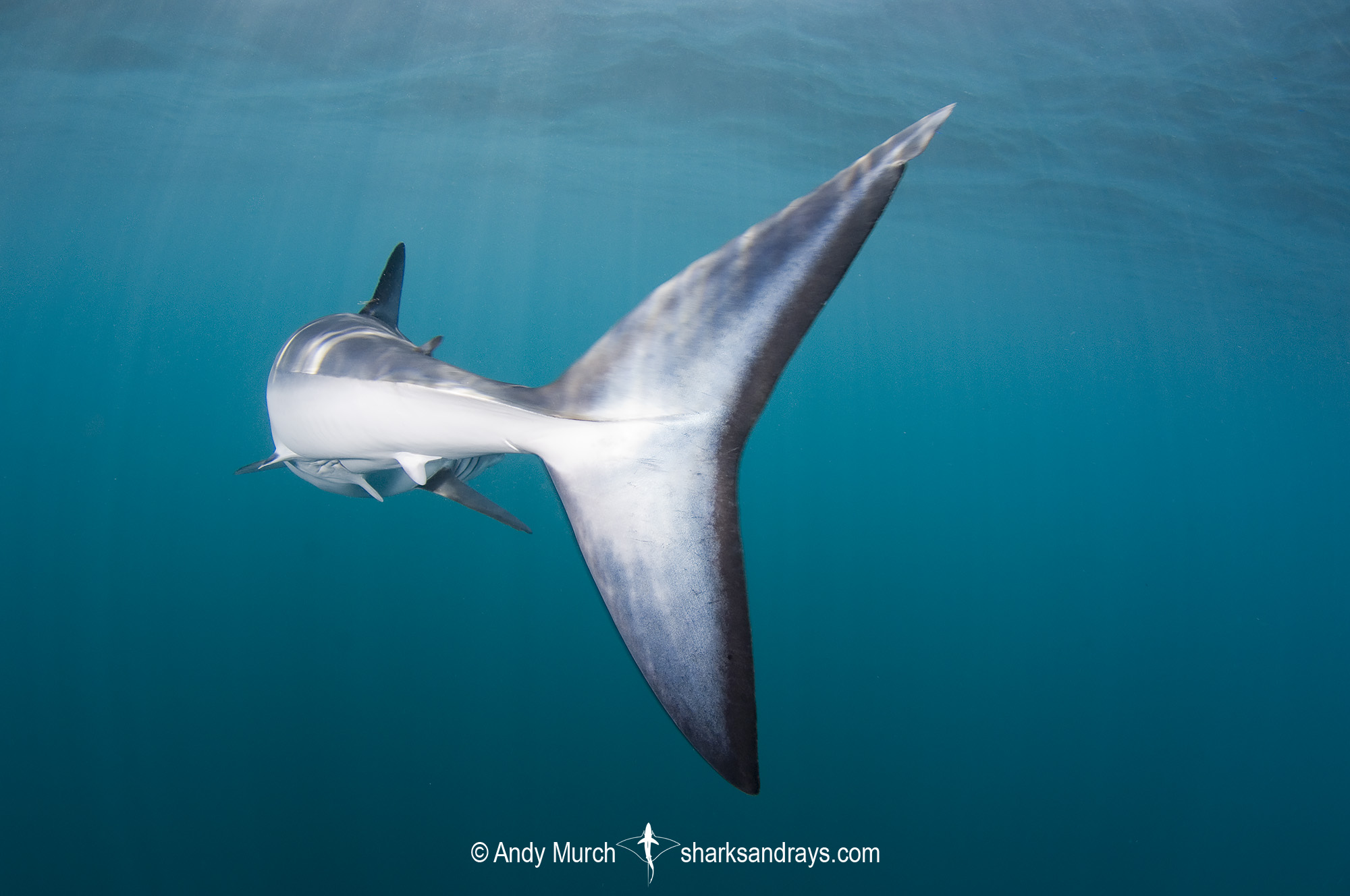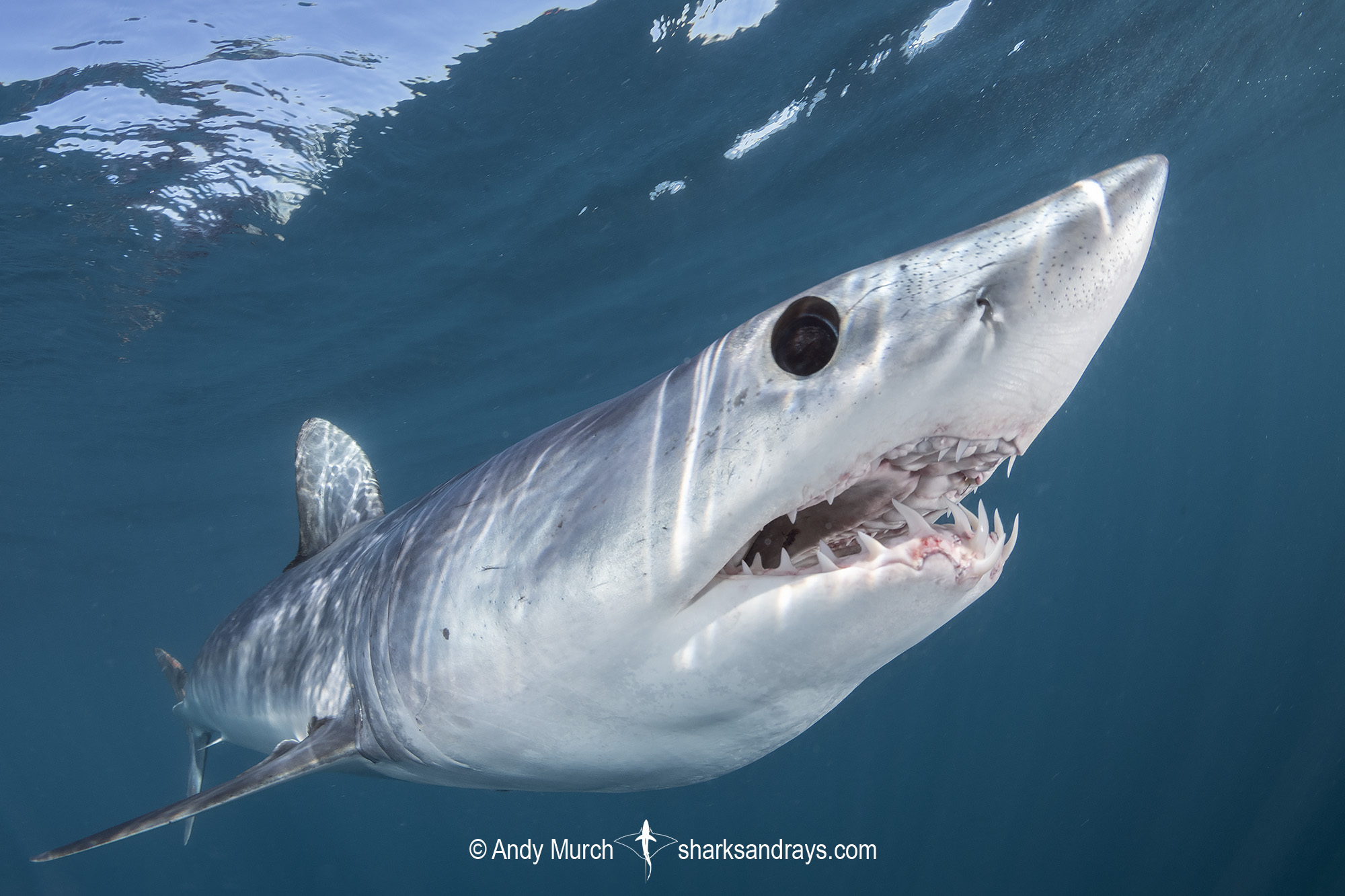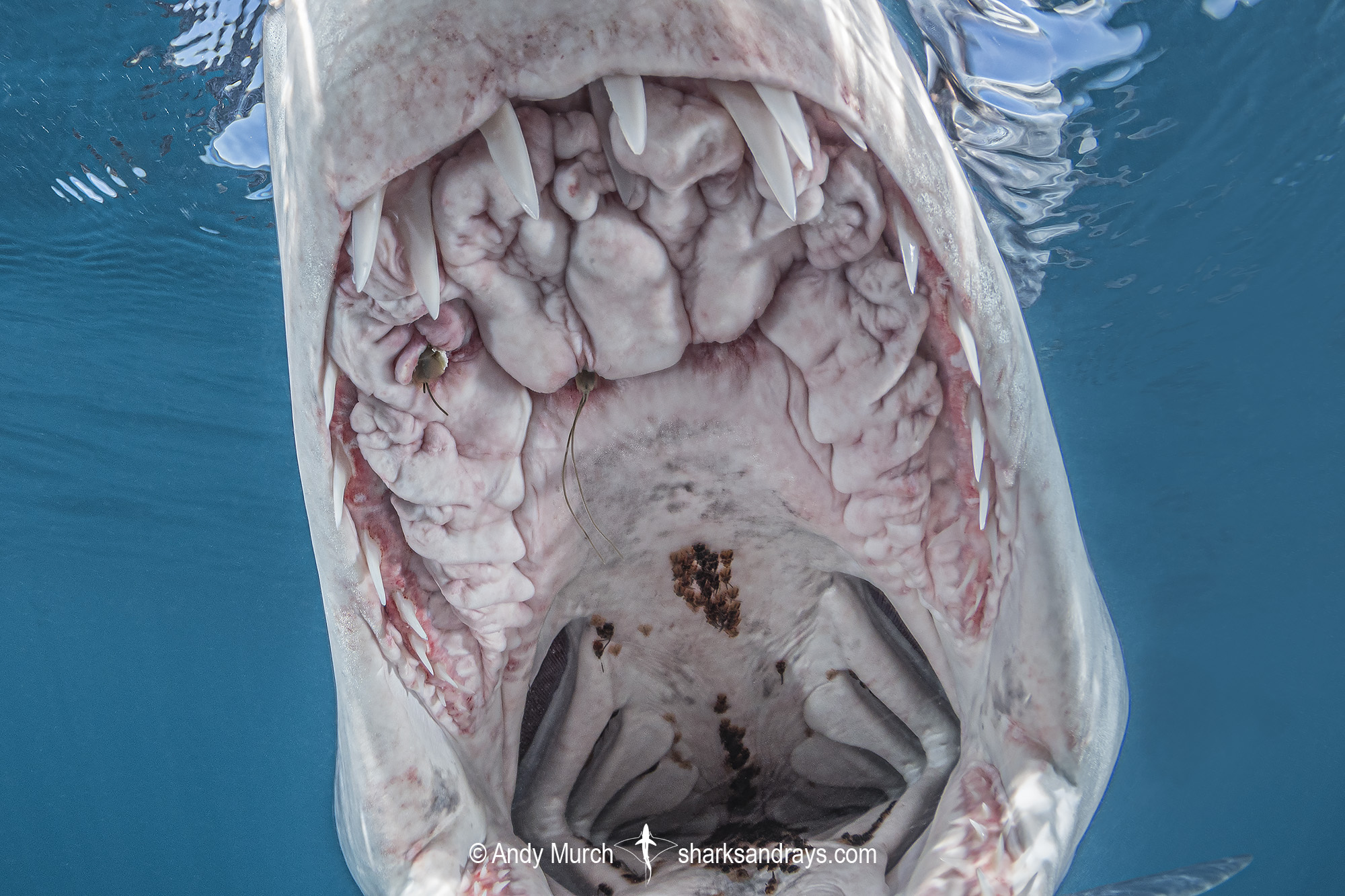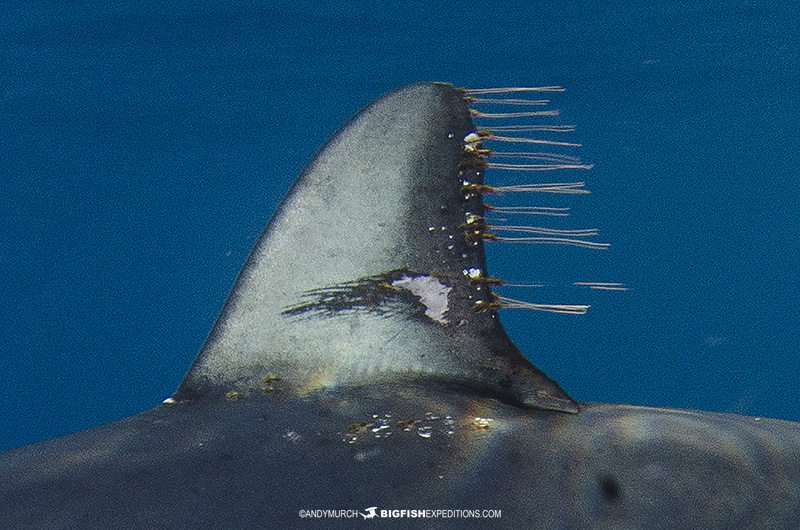Common names
Shortfin Mako, Mako Shark, blue pointer, bonito shark.
Binomial
Isurus oxyrinchus.
Synonyms
Carcharias tigris, Isuropsis dekayi, Isuropsis glaucus, Isuropsis mako, Isurus africanus, Isurus bideni, Isurus cepedii, Isurus glaucus, Isurus guentheri, Isurus mako, Isurus oxyrhinchus, Isurus oxyrhincus, Isurus oxyrhynchus, Isurus spallanzani, Isurus tigris, Isurus tigris africanus, Lamna glauca, Lamna guentheri, Lamna huidobrii, Lamna latro, Lamna oxyrhina. Oxyrhina glauca, Oxyrhina gomphodon, Squalus cepedii.
Identification
A large, powerful shark with a conical pointed snout. Teeth long and pointed. Lower rows of teeth slightly visible when mouth closed. First dorsal fin has a vertical posterior margin. First dorsal origin slightly posterior to pectoral fin free rear tip. Second dorsal fin very small; same size as anal fin. Pelvic fins small. Prominent lateral keels on caudal peduncle support a large, powerful falcate, caudal fin. Upper and lower caudal lobes about the same length.
Dorsal coloration slate grey, dark blue, or metallic blue, flanks more silver-blue. Ventral surface white. Dorsal coloration usually stops above the mouth. Mouth area generally white but large specimens sometimes have grey spots or blotches.
Size
Maximum length 445cm. Size at birth 60-70cm.

Conservation Status
ENDANGERED
The Shortfin Mako (Isurus oxyrinchus) is caught globally as target and bycatch in longline, purse seine, and gillnet fisheries. It is generally retained for its meat and fins. The population in the north and south Atlantic has declined steeply. Lesser declines have occurred in the north Pacific and Indian Oceans. The population in the South Pacific may be increasing. Globally, the shortfin mako population has declined by 50–79% since the 1950s.
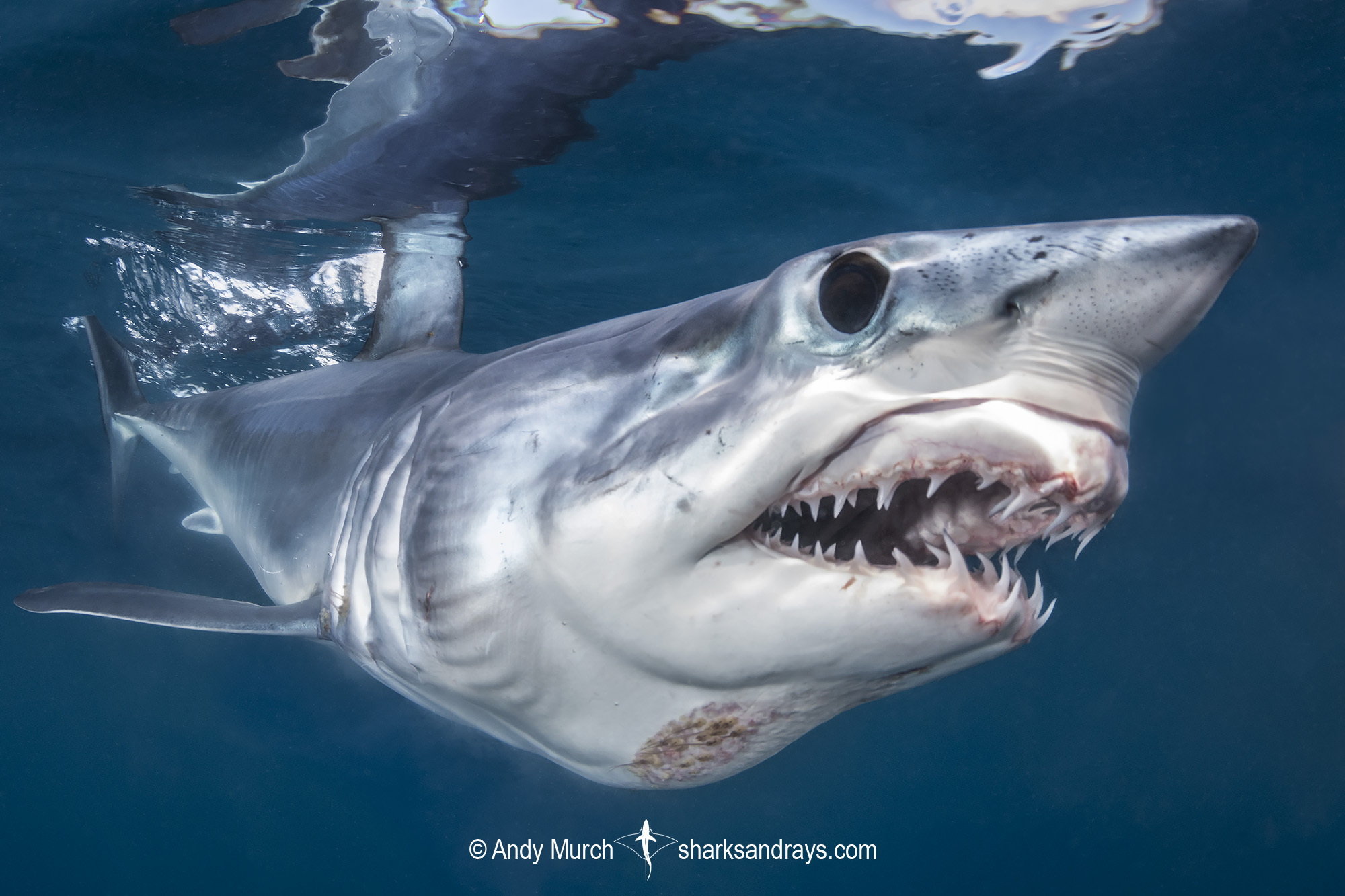
Habitat
Temperate and tropical oceanic waters. Occasionally inshore. Prefers water above 16ºC but will perform short deep dives into water 10ºC. From the surface to at least 888m.
Distribution
Cosmopolitan in temperate and tropical oceanic environments.
Reproduction
An aplacental viviparous species with oophagous (egg eating) embryos. Few full term gravid females have been examined because it appears that gravid females probably abort during capture. 4-25 embryos per litter.
Diet
Shortfin mako sharks generally feed on bony fishes, other sharks, and squid. Large adults may also consume cetaceans. They are one of the few shark species that is fast enough to hunt tuna.
Behavior
Shortfin Makos are extremely fast swimmers that are capable of attaining speeds of at 75km/h and possibly faster in short bursts. They are able to maintain a body temperature 7-10ºC above ambient water temperatures. This gives them an advantage when chasing cold-blooded prey through thermoclines.
Makos undergo extremely long migrations. Specimens tagged in New Zealand have been recaptured near the equator in the Marquesas. They have also been recorded crossing the Atlantic.
Reaction to divers
May make fast, exploratory passes of divers in the open ocean but usually shy unless baited. In baited situations, makos are fearless, making extremely close passes. When they first approach a boat they tend to be very inquisitive and will bite anything metallic that gives off an electric signal in their search for the source of the attractant. Generally, their inquisitiveness quickly fades and they circle at distance or quickly move on.
Diving logistics
There are numerous locations around the world that offer baited, open-ocean diving and/or snorkeling with shortfin mako sharks.
Probably the most consistent encounters are off of Cabo San Lucas in southern Baja, Mexico. Encounters may occur year round but the best month is March. The encounters take place on snorkel. Big Fish Expeditions offers multi-day mako snorkeling trips in March each year. During this period, blue sharks and smooth hammerheads are also commonly seen.
In the US, operators sometimes trips in San Diego, California, and off of Rhode Island in the Northeast Atlantic.
In South Africa, operators run scuba diving trips to see shortfin makos and blue sharks off of the Western Cape. Boats leave from Simonstown.
In the Azores, blue shark snorkeling trips occasionally attract shortfin makos but encounters are uncommon.
In South Australia, white shark diving trip operators occasionally attract makos too.
Similar species
Longfin Mako Shark Distinguished by larger eyes, much longer pectoral fins with rounded tips, and dark grey snout and mouthparts.
Porbeagle Shark Distinguished by a more anterior first dorsal fin and a small secondary caudal keel positioned below the main one.













